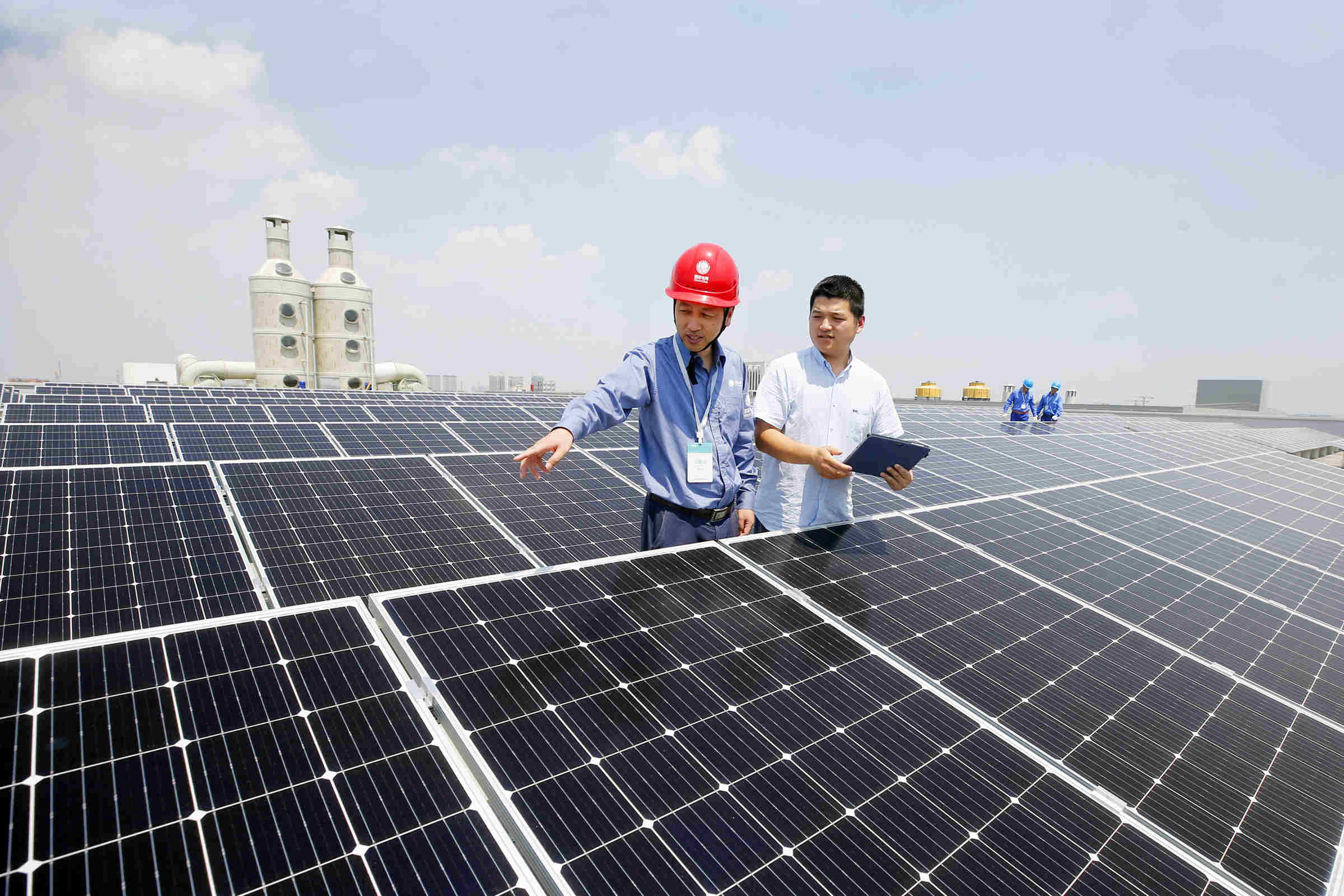
Due to the high temperature this summer, many photovoltaic power station owners believe that this weather is conducive to power generation and can wait for the proceeds to come in. In fact, the high temperature in summer is not equal to the high power of the power station. On the contrary, high temperature and strong humidity will increase the load of the power station and bring many adverse effects. The impact of high temperature weather on photovoltaic modules mainly includes the following points:
1. The output power of photovoltaic modules decreases
Photovoltaic modules generally have three temperature coefficients: open circuit voltage, peak power and short-circuit current. When the temperature increases, the output power of photovoltaic modules will decrease. The peak temperature coefficient of photovoltaic modules is about -0.38 ~ 0.44%/℃, that is, the power generation of photovoltaic modules decreases with the increase of temperature. Theoretically, for each degree of temperature increase, the power generation of photovoltaic power stations will decrease by about 0.44%.
2. Affect the open circuit voltage, resulting in insufficient charging of photovoltaic module system
When silicon solar cells work at high temperature, the open circuit voltage decreases greatly with the increase of temperature, which leads to serious deviation of charging working point and is easy to damage the system due to insufficient charging. The short-circuit current of solar cell increases with the increase of temperature.
In the actual research case, the output power of crystalline silicon solar cell at the temperature of about 20 ℃, is about 20% higher than that at 70 ℃. In other words, if the lighting conditions of the place where the photovoltaic power station is installed are general, but the annual average temperature is relatively low, it is actually beneficial to the photovoltaic solar power station, and its power generation is much higher than that in areas with too strong lighting and too high temperature.
3. Affect the service life of core components of photovoltaic module inverter
In the photovoltaic system, the photovoltaic module is afraid of heat, and the inverter is also afraid of heat. The inverter is composed of many electronic components, and the main components will generate heat during operation. In order to reduce the heat inside the machine, the manufacturer will adopt the forms of heat sink, fan and so on. If the inverter temperature is too high, the performance of components will decline, which will affect the service life of the inverter.
Therefore, ventilation and cooling are usually considered when installing inverters in the construction of photovoltaic power plants. At the same time, whether the temperature can be reasonably used to avoid the negative impact of temperature on photovoltaic solar power plants should be considered when laying wires and cables and designing and installing arrays.
4. The formation of hot spot effect affects the life of photovoltaic modules
If the local temperature is too high, hot spots will be generated, which will affect the service life of photovoltaic modules. Hot spot effect refers to that under certain conditions, the shielded solar cell module in a series branch will be used as a load to consume the energy generated by other illuminated solar cell modules, and the shielded solar cell module will heat at this time. The hot spot effect will destroy the solar cell to a certain extent. Part of the energy generated by the illuminated solar cell may be consumed by the shielded cell, and the hot spot effect of the photovoltaic power station will directly shorten the service life of the photovoltaic module by 30%. In the long run, it may cause component failure.
5. PID effect will be generated and lead to photovoltaic module failure
PID effect, also known as potential-induced degradation, is the phenomenon of component performance attenuation, which is caused by ion migration under the action of high voltage between the battery pack and its upper and lower surfaces. Improper cooling in high temperature weather of photovoltaic power station is easy to produce PID effect and cause component failure.
With the increase of temperature, the photoelectric conversion efficiency will also decrease. Photovoltaic power stations are vulnerable to high temperature weather, which can be improved through reasonable system installation design to a certain extent. Ensure the ventilation and heat dissipation of modules, inverters and distribution boxes, reasonably design and lay out according to local conditions, timely remove the accumulated dust of photovoltaic panels, ensure that the surrounding of modules are open and free of sundries, and pay attention to cable maintenance, so as to achieve the most ideal power generation income.